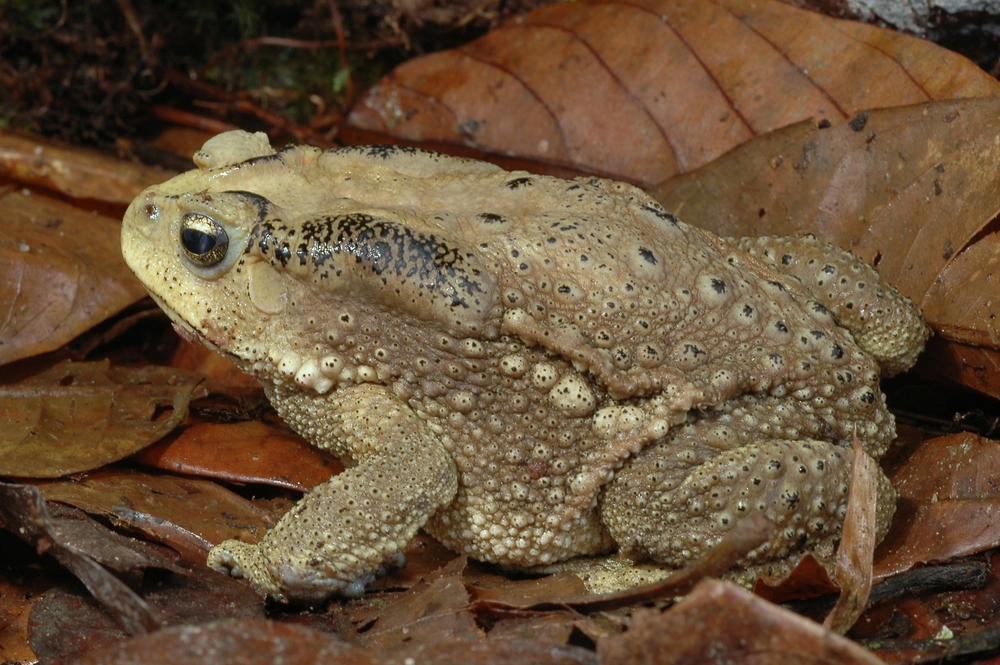
Madagascar is being invaded by a species of toxic toad that’s placing the African island’s unique native fauna in massive danger, also posing a significant threat to human health and even the nation’s economy, a new scientific study has revealed.
The Asian toad (Duttaphrynus melanostictus), also known as the the Javanese, black-spectacled or black-spined toad, is believed to have stowed away on incoming freight containers arriving from south-east Asia between 2007 and 2010, but the menace wasn’t properly identified until 2014. Currently, according to scientists, the alien amphibians are spreading unchecked across the country’s east, wreaking havoc as they hop each extra metre inland. As it stands, there are about four million toads on the island, mostly in area of 110 sq. km around the port city of Toamasina, and their patch is growing by approximately 2km a year.
The recently released report, funded by conservation groups including the Amphibian Survival Alliance, and compiled and authored by an international group of invasive species and herpetology experts, examines the feasibility of a widescale eradication programme, which it believes is possible. But the scientists have warned that action has to take place now, with a dramatically ‘diminishing window of opportunity’.
‘If the toads become established in the Pangalanes canal system—one of the longest manmade canals in the world—eradication will no longer be an option, and they will likely cause ecological damage similar to that of the cane toad in Australia,’ warns James Reardon, eradication expert with New Zealand’s Department of Conservation, and co-author of the report.
The toad is a long-living species that breeds rapidly, with adult females capable of producing up to 40,000 eggs a year. One of their nastier habits it to secrete a milky toxin that’s poisonous to native birds, mammals and some snakes that predate on amphibians. The threat to humans is also very real, especially in Madagascar, where frogs are often eaten; in Laos there have been reports of toad-triggered heart attacks and even deaths. If predator species are impacted by poisoning, one of the predicted knock-on affects is a significant increase in the population of black rats, which could cause health issues for humans by spreading disease, and cause problems with the economy by eating into food stocks.
The first concern, however, is for the island’s unique and wonderful wildlife, which includes 106 species of lemur, hundreds of plants seen nowhere else on Earth, and some 300 species of endemic frog. All of these are already facing severe threats. Rainforests continue to be heavily logged and a pre-existing disease is wiping out large numbers of the island’s indigenous amphibian population.
‘Madagascar is a wildlife haven, containing some of the planet’s richest biodiversity, including lemurs,’ said Christian Randrianantoandro, one of the report’s authors who works with Madagasikara Voakajy, a locally based conservation group. ‘Without swift action, we expect the effects of this toad to be devastating. It could disrupt food chains and cause native predators, prey, and competitors to decline or even go extinct.’
Methods considered so far have included tadpole traps and the use of trained sniffer dogs, but a spray is though to offer the best solution. The scientists have successfully field tested a citric-based acid, which has resulted in a 100% mortality rate—killing the toads within 24 hours. ‘It’s available locally and is cheap,’ Christopher Raxworthy from the American Museum of Natural History told the BBC. ‘It’s the same concentration as lemon juice, so it’s not toxic.’
But the report cautions that it will not be easy to implement an effective eradication programme, and estimates the total cost to be around US$2m-$10million. ‘Such an extreme eradication effort will be extraordinarily difficult to organise considering Madagascar’s limited resources,’ the authors warn.
The cost of not acting, however, is even more pricey. Already, over the last few decades, more than US$1billion has been invested into protecting Madagascar’s wildlife and all this could be undone within a few years unless the toad is stopped.
‘Considering the broad range of biological and economic negative impacts that are expected from this toxic toad, future generations will be furious, should we not make an eradication effort now, while there is still a chance of success,’ says Raxworthy, who is also a herpetologist and co-author of the report. ‘We do not want to look back 20 years from now and wonder what Madagascar would be like if we had addressed this issue properly.’
